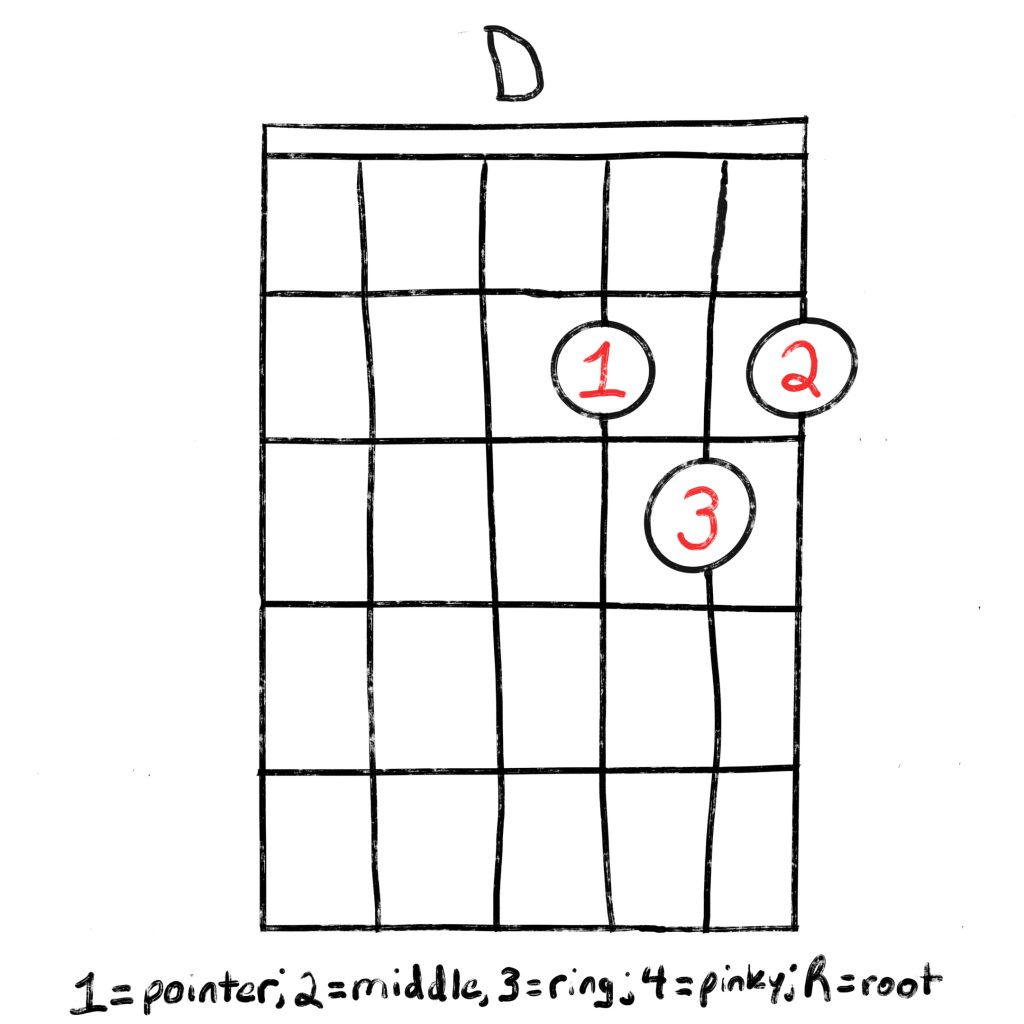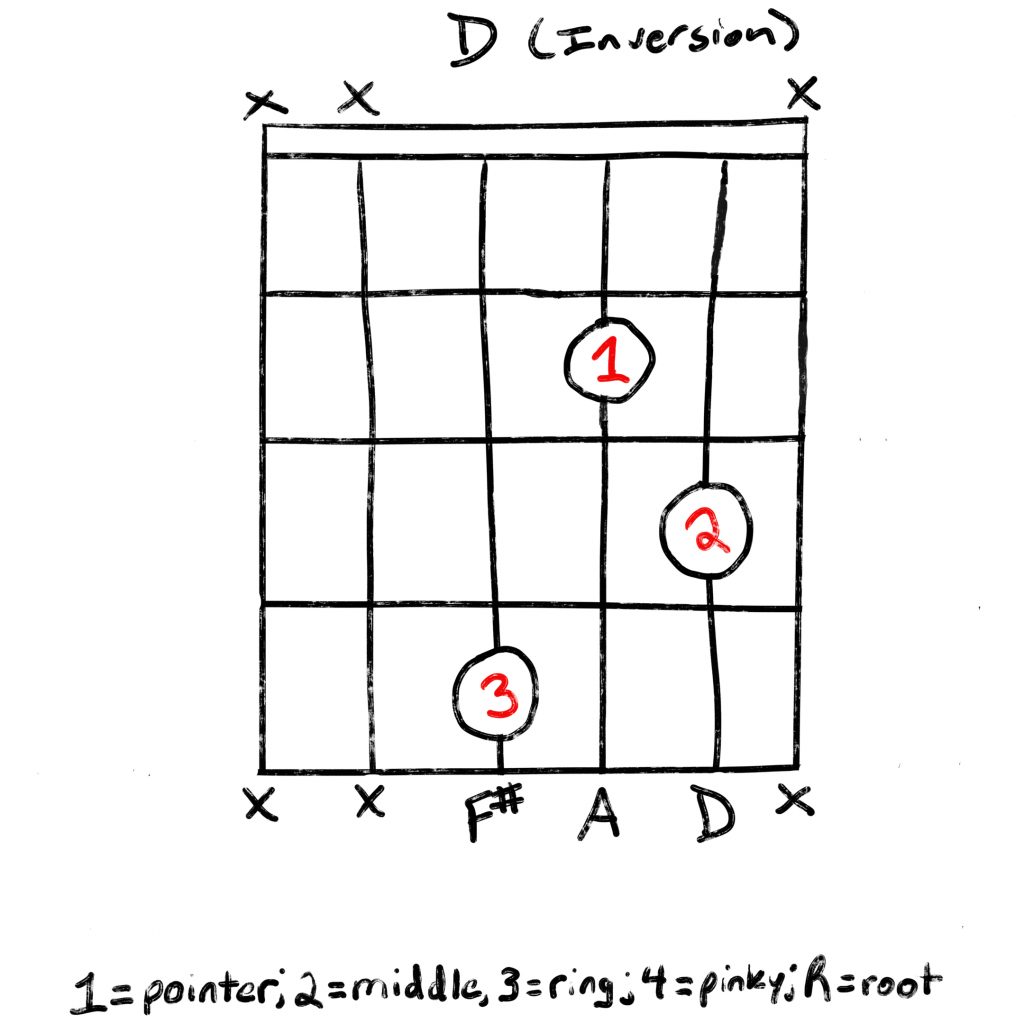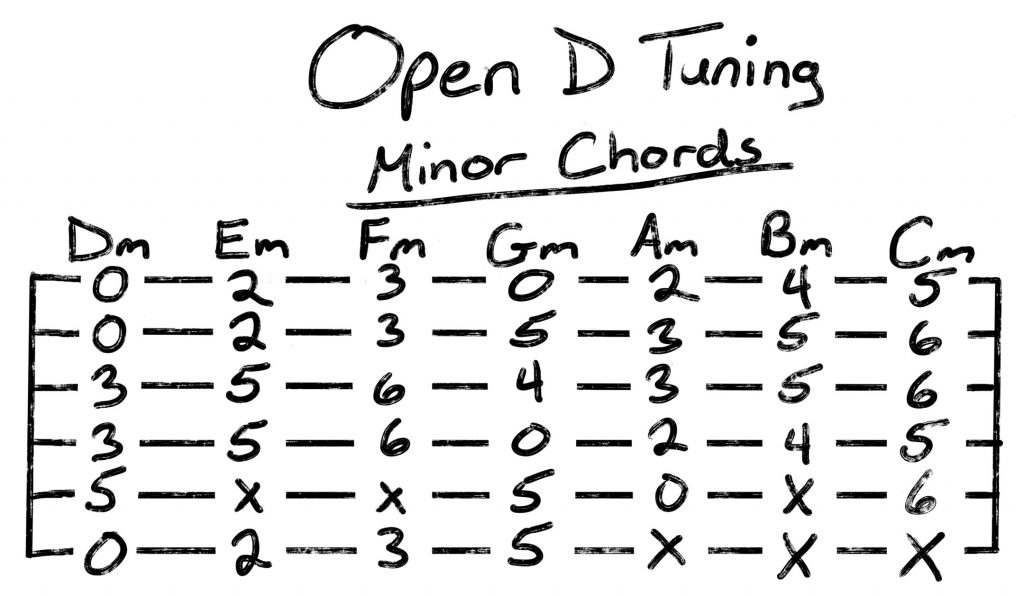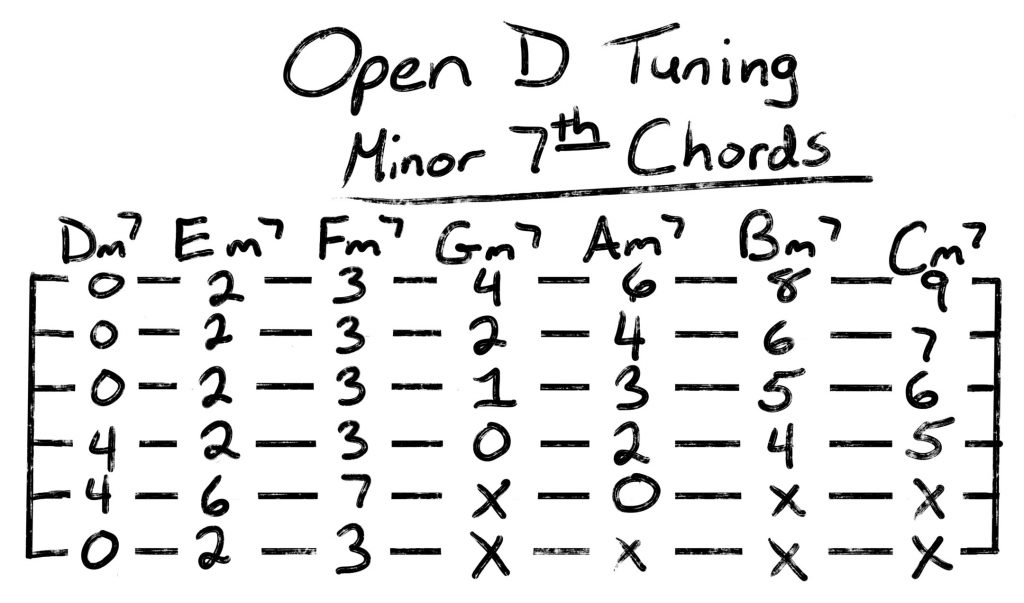Exploring alternate guitar tunings can open up a whole new world of creativity for a musician. Open D specifically is a fun and easy to play tuning that lends itself to just about any genre or style you can think of.
Let's get to the lesson!
Open D Tuning And Chords
What is Open D Tuning?
Open D tuning for guitar is when you alter standard tuning from E - A - D - G - B - e to D - A - D - F# - A - D. When you strum the strings open, without fretting anything, it will play a D chord.
You may notice, this tuning is very similar to DADGAD. The chord shapes are very similar with the obvious exception of the F# instead of G string.
How To Tune Your Guitar To Open D Tuning
Open D is really easy to tune your guitar to. You only have to retune 4 of your 6 strings.
- low E down a whole step to D
- G down a half step to F#
- B down a whole step to A
- high e down a full step to D
When you are tuned correctly to Open D the strings will make a D chord when strummed open.
Why Use This Tuning?
Open D is a very versatile tuning. As we mentioned above, it sounds great no matter what style you are playing. To be more specific in why you should try this, or any alternate tuning, like Drop B, Open G, Open C, etc, check out the points made below.
Spark your creativity
Alternate tunings open up new ways of appraoching the guitar fretboard. Often times, after you have been playing for a while, muscle memory kicks in when you pick up your guitar and you end up playing the same things you always play.
Eventually, the same chords and same licks start to be a little less exciting.
With alternate tunings, like Open D tuning, you have to relearn where all of the notes are located and how each strings work with each other. Just this little change is enough to get your creative juices flowing again.
It's fun and simple
We got into music because it's fun, right? Open D is really fun. You can play any major chord with just one finger. Many other chord variations only need an additional finger or two. Like I said, this tuning is really easy to learn.
The simplicity makes this tuning easy and adaptable to anything you want to play.
How To Make Chords
The rules of music theory are still the same even though the tuning of your guitar has changed. If you want to make a chord you will still build them using the major triad formula.
Inversions
One way to make this tuning sound a little more interesting is to add inversions. Inversions of chords are essentially when you swap the order of the notes.
Since Open D tuning has 3 D strings and 2 A strings, that makes inversions really, really easy to form. You can almost always find the note you need within a short finger reach.
Let's take a look at an example to better help you understand how inversions work.
For example, we will look at a D chord in standard tuning:

A D chord is built with 3 notes; the I (1st), or D, III (3rd), or F#, and V (5th), or A. The way most of us play it is with your:
- index finger (1) on the A note of the G string on the 2nd fret
- middle finger (2) on the F# note of the high e string on the 2nd fret
- ring finger (3) on the D note of the B string on the 3rd fret

But you can create an inversion by putting your:
- index finger (1) on the A note of the G string on the 2nd fret
- middle finger (2) on the D note of the B string on the 3rd fret
- ring finger (3) on the F# note of the B string on the 4th fret
It still makes the same chord but the tones sound just a tad different. Inversions are great to add some subtle changes to your progressions.
Try it out!
Open D Chords
Here's what you were looking for! How to play chords in Open D tuning.
As we mentioned earlier, you can play all of the major chords with just a single finger. In addition to major chords, we will also cover minor, 7th, minor 7th, add2, and sus4 chords.
Obviously, there are many different versions of these chords and many more not listed. This should give you a good starting point to learn how to play in this tuning.
Single Finger Chords
These chords couldn't be easier. As long as you can play a barre chord, you can play any of these major chords.

Open D Minor Chords
Minor chords are a little bit more difficult than single finger major chords but still not awful. You will notice there are a few different chord shapes listed below. Try using them in different positions for different chord voicings.

Open D 7th Chords
Who doesn't love a good 7th chord in their chord progressions?

Open D Minor 7th Chords
Major chords shouldn't get all the 7th fun. Here are several ways to play minor 7th chords.

Open D add2 & sus4
Both, add2 and sus4 chords can give your chords a bit of subtle change to keep your progressions from sounding repetitive.


Open D Tuning Chord Progression
Here's a quick practice progression you can use to get used to single finger chords. This is meant to be played quickly with a hint of distortion and some palm muting. Have fun and see what progressions you can come up with of your own.

Songs That Use Open D Tuning
You can see from this list that Open D tuning is used in many different genres. Bob Dylan made liberal use of the tuning on his Blood on the Tracks album. But this tuning sounds just as good when playing blues, rock, folk, and even metal.
- A lot of slide blues
- Over Now by Alice in Chains
- Ghost of Days Gone By by Alter Bridge
- Police Dog Blues by Blind Blake
- Lump Sum by Bon Iver
- Re:Stacks by Bon Iver
- Thunder by Boys Like Girls
- Simple Twist of Fate & Buckets of Rain by Bob Dylan (most of the Blood on the Tracks album)
- Sunflower River Blues by John Fahey
- Viking Kong by Paul Gilbert
- Dust My Broom by Elmore James
- Make God Jealous by Alain Johanes
- Payphone by Sungha Jung
- Spencer the Rover by John Martyn
- The Cave by Mumford & Sons
- Sometimes by My Bloody Valentine
- Ghost of Perdition by Opeth
- Even Flow by Pearl Jam
- Jigsaw Falling Into Place by Radiohead
- Time For Me To Fly by REO Speedwagon
- Street Fighting Man by The Rolling Stones
- The Gardener by The Tallest Man on Earth
- The Confessor by Joe Walsh
Final Word
Open D tuning is such a fun tuning. It's great for exploring new ways of approaching song writing, or good if you just want to single finger strum around the camp fire. The possibilities are endless.
Happy playing!

franz says
Hello Justin
Does your help only apply to guitar playing or can that also be done for a LapSteel guitar?
Justin says
Hi Franz,
Absolutely! In fact, Lapsteel guitars are not typically tuned to standard guitar tuning (E-A-D-G-B-e). Many Lapsteel players opt for Open tunings.
Best,
Justin